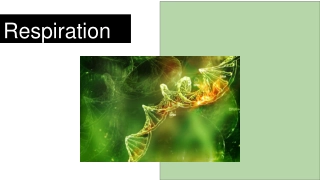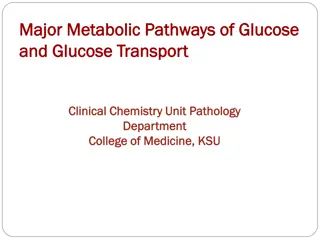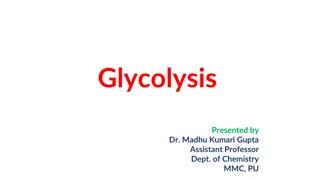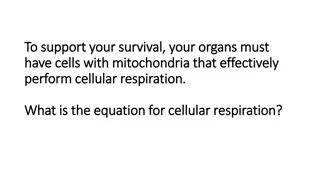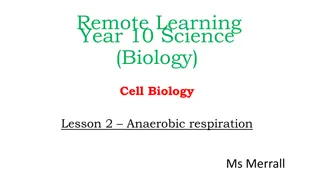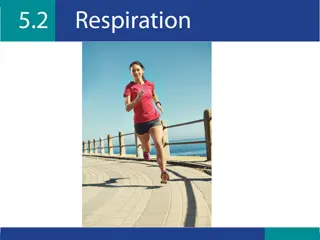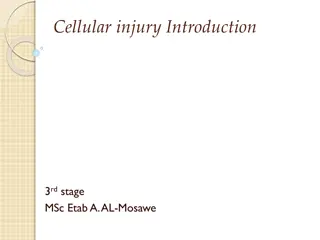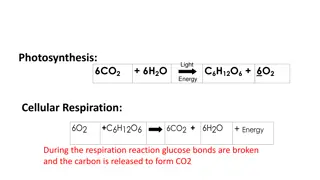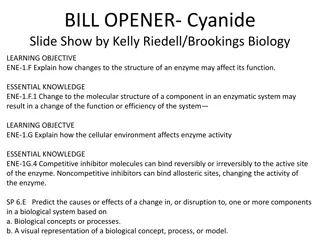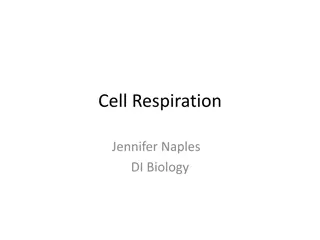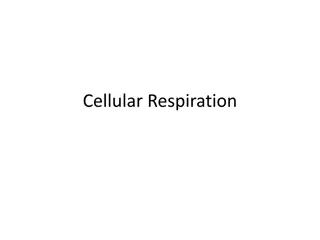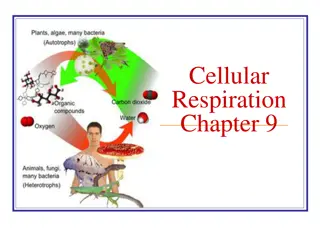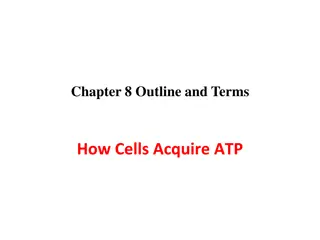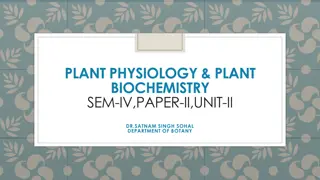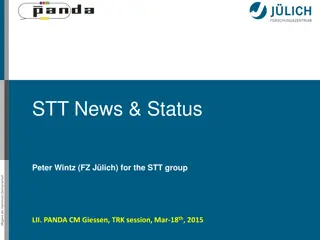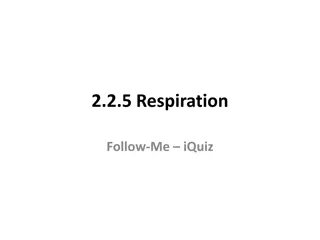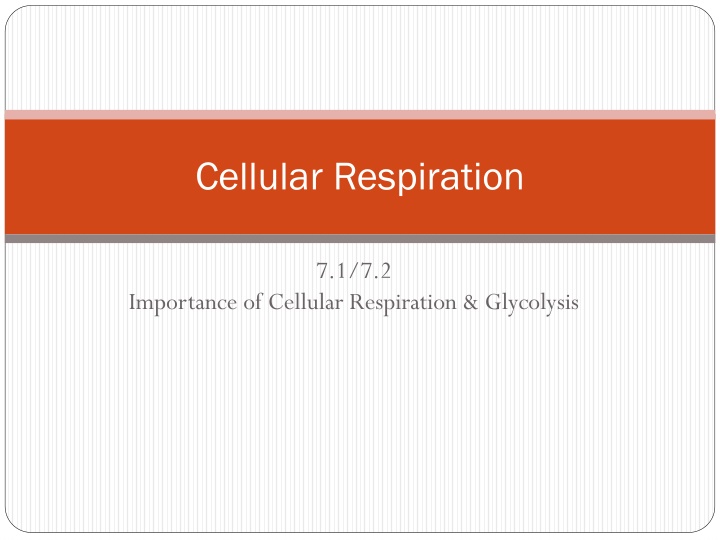
Importance of Cellular Respiration and Glycolysis
Explore the significance of cellular respiration and glycolysis in converting glucose into energy-rich molecules essential for various cellular processes. Understand the complementary reactions of photosynthesis and respiration, compare their roles, and learn about the intermediates involved in oxidation-reduction reactions. Discover how ATP is synthesized from glucose molecules and the essential role of ATP in cellular energy production.
Download Presentation

Please find below an Image/Link to download the presentation.
The content on the website is provided AS IS for your information and personal use only. It may not be sold, licensed, or shared on other websites without obtaining consent from the author. If you encounter any issues during the download, it is possible that the publisher has removed the file from their server.
You are allowed to download the files provided on this website for personal or commercial use, subject to the condition that they are used lawfully. All files are the property of their respective owners.
The content on the website is provided AS IS for your information and personal use only. It may not be sold, licensed, or shared on other websites without obtaining consent from the author.
E N D
Presentation Transcript
Cellular Respiration 7.1/7.2 Importance of Cellular Respiration & Glycolysis
Complementary Reactions Photosynthesis: series of reactions that convert light into chemical energy to produce energy-rich glucose molecules. Glucose can be used immediately or stored. Cellular Respiration: series of reactions that release the energy stored in glucose (in the form of ATP) CO2(g) + H2O(l) + energy C6H12O6(s) + O2(g) C6H12O6(s) + O2(g) CO2(g)+ H2O(l)+ energy
Intermediates Oxidation-reduction (redox) reactions produce intermediate products used by cells to complete processes LEO the lion goes GER Photosynthesis: NADPH (reduced from of NADP+) and ATP Cellular Respiration: NADH (reduced form of NAD+) and FADH2(reduced form of FAD+) Serve as electron carriers: transfer electrons through redox reactions Energy released can be used to make ATP (attach ADP to Pi)
Cellular Respiration Breaking down of large energy molecules of glucose into smaller molecules The smaller you break them down, the more energy you can derive from the process The energy released in cellular respiration is used to synthesize ATP Glucose molecules must be converted into another form of energy (ATP) before it is useful to the body
ATP Estimated 1 billion molecules of ATP in a human cell - continuously broken down into ADP and Piand reformed Most processes that require ATP energy can be placed into one of the following categories (Table 1 pg 206) - motion - transport of ions/molecules - building of molecules - switching reactions on and off - bioluminescence
Glucose Our blood sugar : high energy content, small, highly soluble - ideal for transportation Chemical bonds of reactant food molecules (glucose) broken during respiration Break bonds = requires energy New bonds = energy released Respiration an energy-releasing process: more energy released during formation of product molecules Single glucose molecule - 36% converted into energy of ATP - 64% released as heat
Types of Cellular Respiration Aerobic cellular respiration: requires O2and involves complete oxidation of glucose (produces 36 ATP) - Stage 1: glycolysis (cytoplasm) - Stage 2: pyruvate oxidation (mitochondria) - Stage 3: Krebs Cycle (mitochondria) - Stage 4: ETC and chemiosmosis (inner mitochondria) Anaerobic cellular respiration: occurs in absence of O2 and glucose is not completely oxidized. - Stage 1: glycolysis (cytoplasm) - Stage 2: fermentation (cytoplasm) 2 types of anaerobic respiration: one produces ethanol, one produces lactic acid NOTE: BOTH BEGIN WITH GLYCOLYSIS!!!
Aerobic cellular respiration: Overview Aerobic cellular respiration: Overview
Stage 1: Glycolysis sugar splitting No oxygen required Thus it is the first step for both aerobic and anaerobic respiration Occurs in the cytoplasm Starts with glucose (6-carbon sugar) 2 ATP molecules are used in the first stages of glycolysis ( investment phase ) 2 NAD+removes H+ions and forms 2 NADH Later enough energy is released to form 4 ATP, which will be available to be used in cellular functions Glycolysis produces TWO 3-carbon pyruvate molecules Net production of 2 ATP
Glycolysis Relatively inefficient Only transfers about 2.2% of free energy available in glucose to ATP Some released as heat, but remainder tied up in pyruvate and 2 NADH molecules glycolysis
Glycolysis Review: Reactants: 1 Glucose 4 ADP 4 Pi 2 ATP 2 NAD+ 2 H+ Products: 2 Pyruvate 4 ATP (therefore, net gain of 2 ATP) 2 ADP 2 NADH

